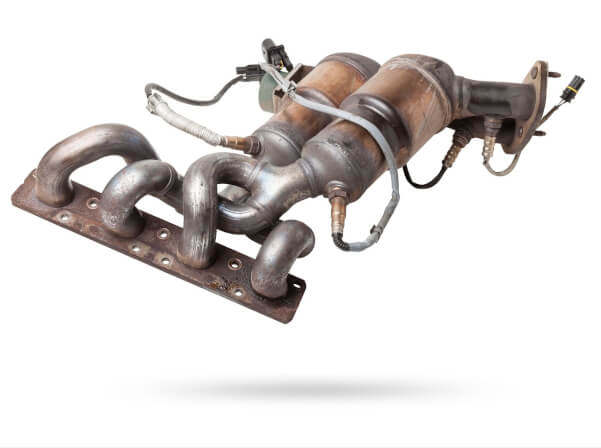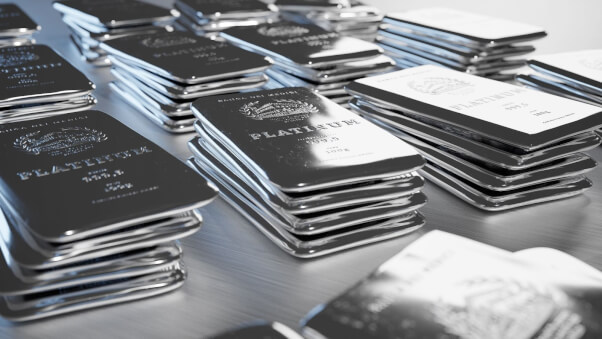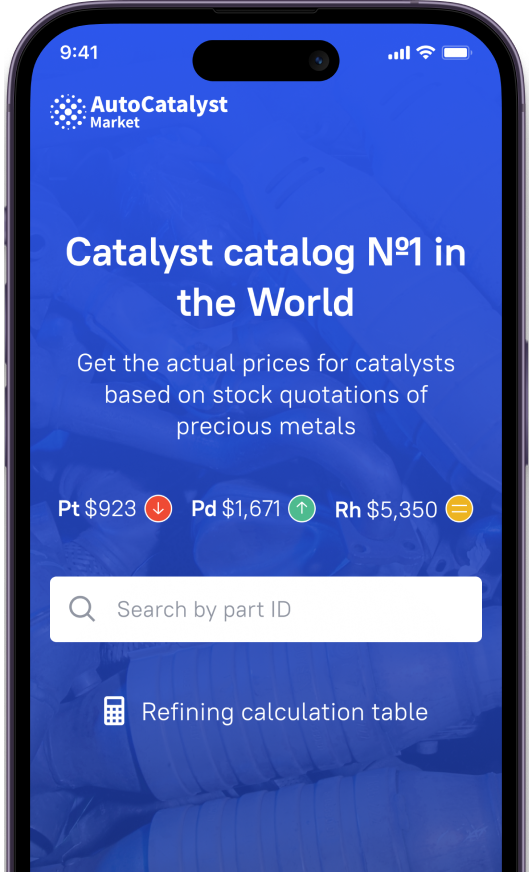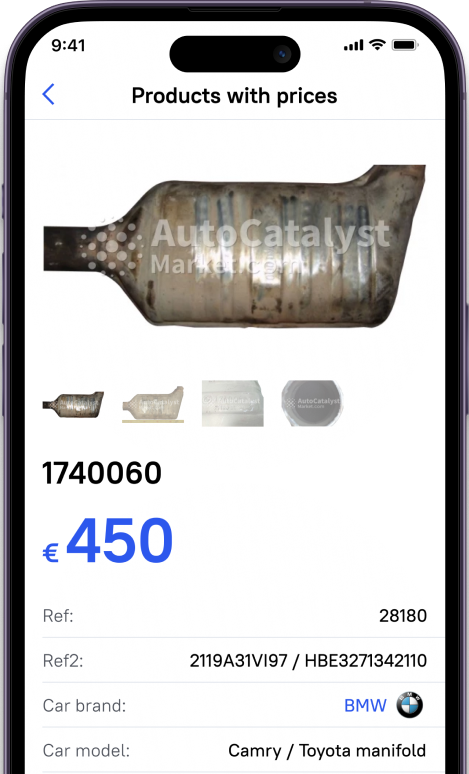- What is Platinum?
- Role of Platinum in a Catalytic Converter
- Аmount of platinum in a catalytic converter
- Factors Affecting Platinum Content
- Impact of Platinum Price Changes on Converter Value
- How to Extract Platinum from Used Converters?
- Which catalytic converters have the most platinum?
- How to Recycle My Catalytic Converter?
Catalytic converters play a vital role in vehicle exhaust systems, utilizing a combination of precious metals like platinum (Pt), palladium (Pd), and rhodium (Rh). These elements work collectively to mitigate harmful emissions. Today, our discussion centers on platinum, emphasizing its crucial role within catalytic converters. Exploring the importance of platinum highlights its significant contribution to the efficiency of these automotive catalysts. Let us see how much is the platinum in a catalytic converter worth.
What is Platinum?
Platinum, a transition metal denoted by atomic number 78, stands as a lustrous, silvery-white element renowned for its remarkable chemical properties. This metal boasts exceptional resistance to corrosion, oxidation, and high temperatures, making it highly coveted in various industries. Its rarity in nature elevates its value; platinum occurs in significantly lower quantities than gold or silver therefore it is more expensive and primarily sourced from platinum-containing ores such as sperrylite or cooperite. Extracting platinum demands intricate refining processes involving precise chemical treatments, smelting, and electrolysis. Beyond its industrial utility in catalytic converter manufacturing, platinum finds applications in jewelry, electronics, and medical devices owing to its malleability, conductivity, and inertness, cementing its status as a precious and indispensable element in numerous sectors.
Role of Platinum in a Catalytic Converter
Platinum plays a crucial role in catalytic converters as a catalyst, expediting chemical reactions without undergoing permanent alteration. Within converters, platinum facilitates redox reactions vital for converting harmful gases: carbon monoxide, nitrogen oxides, and hydrocarbons – into less detrimental compounds. Its catalytic properties enable the breakdown of these pollutants into benign substances like carbon dioxide, water vapor, and nitrogen. Serving as a catalyst, platinum ensures the efficient conversion of toxic emissions into environmentally friendlier outputs, making it indispensable in catalytic converters for its proficiency in promoting these crucial reactions.
Аmount of platinum in a catalytic converter
The quantity of platinum in a catalytic converter varies based on the converter's design and type. From 2 to 7 grams or 0,07 – 0,25 is how many ounces of platinum are in a catalytic converter on average. However, this weight can fluctuate depending on the specific converter model and the year of manufacture. Advanced converter designs aim to optimize platinum usage, striving to minimize the amount required without compromising the converter's catalytic performance. The careful balance between efficiency and economic feasibility reflects the ongoing efforts within the automotive industry to reduce platinum usage while ensuring effective emissions control.
Factors Affecting Platinum Content
How many grams of platinum are in a catalytic converter depends on multiple factors. First and foremost is the converters’ types which are:
- TWC – three-way catalysts mostly used in gasoline powered vehicles
- DOC – diesel oxidation catalysts for diesel engines
- DPF – Diesel Particulate Filters
Platinum is not the primary metal used in DPF’s, however, it can be incorporated in earlier models. The main purpose of DPF is to facilitate the oxidation of particulate matter collected by the filter, aiding in their combustion and ensuring efficient filter regeneration. However, the amount of platinum used in DPFs is generally lower compared to other catalytic converters.
TWC have the most platinum contained and the DOC is in the middle spot.
Advanced converter technologies, like lean-burn engines or hybrid systems, may optimize platinum usage to align with evolving environmental standards. Additionally, market dynamics, recycling initiatives, and shifts in global supply chains for platinum significantly impact its availability and subsequent usage in converters, highlighting the complex interplay of economic, technological, and regulatory factors.
Impact of Platinum Price Changes on Converter Value
If you carefully monitor precious metal exchanges, you'll notice how the price of catalytic converters correlates with fluctuations in these markets. This correlation exists because platinum is both a precious metal and a component in catalytic converters. When the price of platinum rises, so does the price of converters, especially those with higher platinum content. Similarly, the market responds inversely when prices drop.
The price of platinum on precious metal exchanges can be influenced by related industries such as jewelry, the automotive sector where converters are integral and to some extent, medicine, due to platinum's use in chemotherapy, medical equipment, and implants. The collective demand and supply among these sectors shape the overall market response concerning platinum.
To stay in touch with the price changes and Pt volatility on the metal exchange markets you can utilize the AutoCatalystMarket website. Here we present actual information on the catalytic converter prices that include Platinum which is a convenient way to track it. Besides, the site counts over 25,000 units with images providing you valuable insights to converters specifics, manufacturers and brands which cars have platinum catalytic converters.
How to Extract Platinum from Used Converters?
Recycling used catalytic converters involves a comprehensive process to extract valuable metals like platinum. This intricate procedure encompasses several stages:
- Decanning: Removing the converter's shell to access the catalyst.
- Crushing and Milling: Reducing the catalyst to a fine powder for subsequent processing.
- Chemical Treatment: Employing acids to dissolve the powder, separating platinum from other metals.
- Precipitation: Adding agents to isolate platinum compounds.
- Filtering: Separating the platinum precipitate for purification.
- Reduction: Converting compounds into metallic platinum.
- Smelting: Melting the refined platinum for further purification.
- Final Refinement: Ensuring high-purity platinum.
This methodical approach maximizes the recovery of platinum from converters, contributing to resource sustainability. Extracting platinum from used converters not only conserves precious metals but also minimizes environmental impact, signifying a crucial facet of responsible resource utilization.
Which catalytic converters have the most platinum?
Three-way catalysts (TWC) in gasoline-powered vehicles typically contain the highest platinum content among catalytic converters. Specific models from brands like Toyota Prius, Honda Accord, or Volkswagen Golf may showcase converters with notably higher platinum concentrations. These converters aim for a measurement balance between platinum, palladium, and rhodium to ensure efficient emissions control. While diesel oxidation catalysts (DOC) or diesel particulate filters (DPF) in diesel vehicles are also important, they generally contain lower platinum amounts compared to TWCs. The variance in platinum content often aligns with diverse vehicle emission control strategies employed by different manufacturers, with TWCs in certain gasoline vehicles demanding higher platinum proportions for effective pollutant conversion.
How to Recycle My Catalytic Converter?
Recycling in order to selling a used catalytic converter offers two main avenues. Traditional scrapyards, while offering accessibility, come with inherent drawbacks. Proximity proves advantageous, yet these yards often associate with illicit activities involving stolen catalysts, and they commonly undervalue purchases.
Conversely, online platforms such as AutoCatalystMarket provide a more favorable alternative. Linking sellers with reputable buyers, this method ensures equitable transactions, circumventing scrapyards' risks. Its regional dealer options maintain accessibility, tailored to individual sales needs.
To sell through AutoCatalystMarket, adhere to these steps:
- Ready Your Catalyst: Ensure readiness by removing surplus components for shipment.
- Obtain Quotes: Engage potential buyers for accurate pricing or seek initial quotes locally.
- Optional Shipping: Securely package for transit if shipping is preferred.
- Secure Payment: Upon buyer confirmation, expect prompt payment for your sale.
Harness the efficiency of AutoCatalystMarket to streamline your entire selling process. Simplify every stage, from meticulously preparing your converter to securely securing your well-deserved compensation. Enjoy the convenience of managing these steps from the comfort of your smartphone, all at your fingertips. This user-friendly platform empowers you to effortlessly navigate through the selling journey, facilitating easy communication with potential buyers, obtaining quotes, and finalizing transactions hassle-free.








































